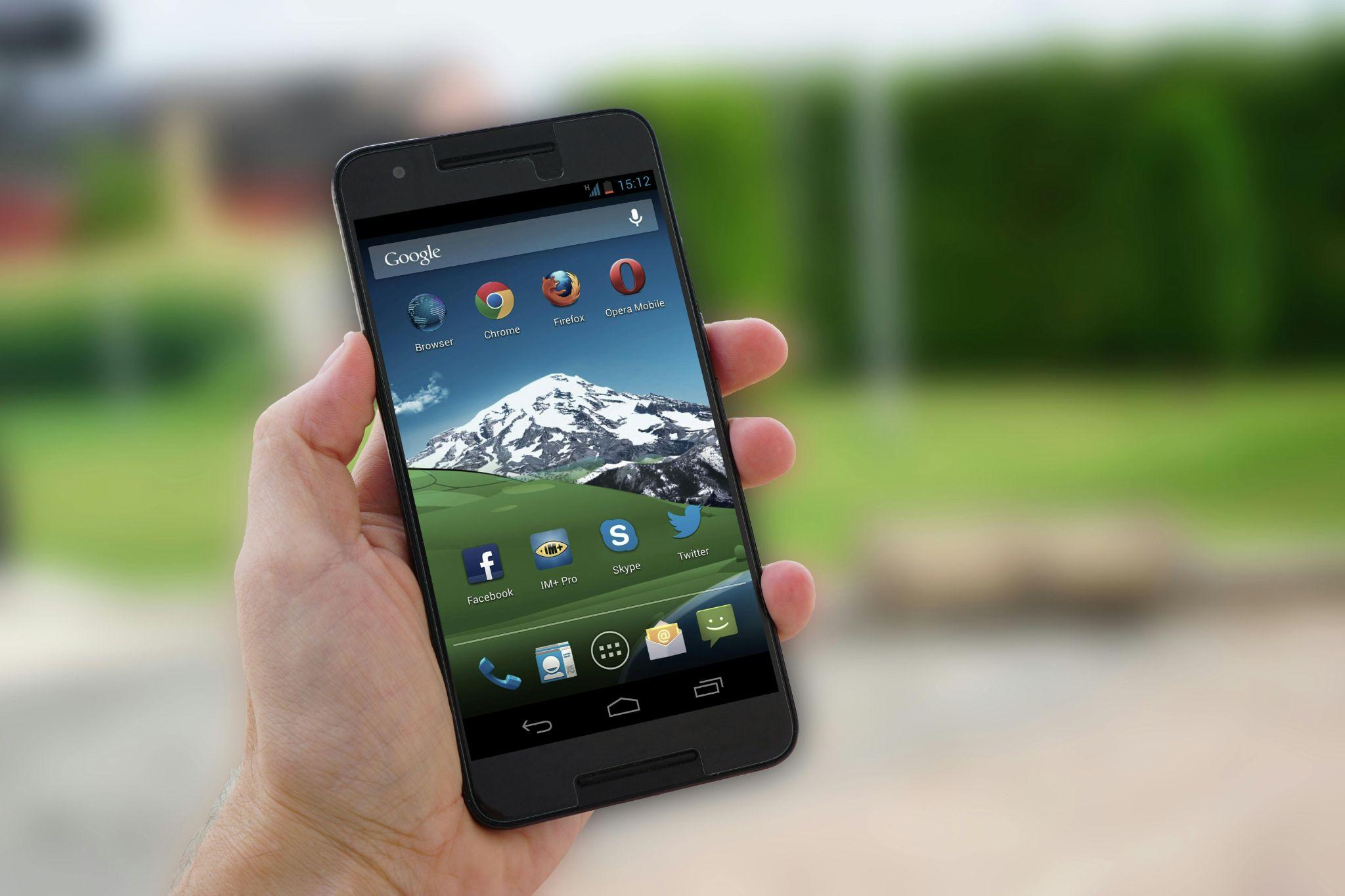The mobile app trends to watch in 2025 are fundamentally reshaping how users interact with technology, driven by groundbreaking innovations in artificial intelligence, 5G connectivity, augmented reality, and the emergence of super apps. These technological advances are creating unprecedented opportunities for developers and businesses to deliver more personalized, integrated, and immersive experiences that meet evolving user expectations. As we enter this transformative year, understanding these trends becomes crucial for anyone looking to build competitive mobile applications that resonate with modern consumers.
According to recent industry research from Statista, the global mobile app market is projected to reach $673 billion by 2027, with AI-powered features and cross-platform integration driving the majority of this growth.
AI-Powered Personalization & Intelligent Features
Artificial intelligence and machine learning have evolved from simple recommendation engines to sophisticated systems that deliver hyper-personalized experiences and intelligent automation throughout mobile applications. Modern AI implementations analyze user behavior patterns, preferences, and contextual data to create uniquely tailored experiences that adapt in real-time to individual needs and circumstances.
AI-Driven Onboarding & In-App Guidance
Applications are now utilizing AI to create dynamic onboarding flows that adapt based on user responses, demographic data, and behavioral cues detected during initial interactions. This intelligent approach ensures that new users receive the most relevant information and features based on their specific use cases and experience levels.
Key benefits and use cases include:
- Personalized welcome screens that highlight features most relevant to individual user profiles
- Contextual feature suggestions based on usage patterns and similar user behaviors
- Adaptive tutorial flows that adjust complexity and pacing based on user comprehension
- Intelligent content curation that surfaces relevant information during critical user journey moments
- Behavioral nudging that guides users toward high-value actions without feeling intrusive
Large Language Models & Intelligent Assistants Embedded
The integration of mobile-optimized large language models and conversational AI assistants is transforming how users interact with applications. These systems prioritize privacy by processing data locally while providing sophisticated natural language understanding capabilities.
Emerging capabilities include:
- Offline voice assistants that function without internet connectivity
- Contextual chatbots that understand app-specific terminology and user intent
- Intelligent search functionality that interprets natural language queries
- Automated content generation for personalized recommendations and summaries
- Multi-language support with real-time translation capabilities
Super Apps & Ecosystem Consolidation
The super app phenomenon represents a fundamental shift toward consolidated platforms that combine messaging, payments, commerce, and various services within a single application ecosystem. This trend is reshaping user expectations and creating new opportunities for comprehensive digital experiences.
Rise of Everything Apps and Mini-App Ecosystems
Platforms like WeChat, Grab, and Paytm have demonstrated the power of ecosystem consolidation, fundamentally changing how users approach digital services. These super apps create sticky user experiences by eliminating the need to switch between multiple applications for different tasks.
| Feature | Super Apps | Single-Purpose Apps |
|---|---|---|
| User Retention | 85-90% monthly retention | 25-30% monthly retention |
| Session Duration | 45-60 minutes daily | 5-10 minutes daily |
| Revenue Streams | Multiple integrated streams | Single primary stream |
| Development Complexity | High initial, lower maintenance | Lower initial, higher scaling costs |
| User Acquisition Cost | Higher upfront, lower long-term | Lower upfront, higher long-term |
Contextual, System-Wide Integration
Applications are increasingly integrating at the operating system level, creating seamless experiences that work across multiple apps and devices. This Apple Intelligence-style approach enables contextual actions and information sharing that feels natural and intuitive to users.
Advanced integration features include cross-app data synchronization, system-wide search capabilities, and intelligent task automation that spans multiple applications and services.
5G, AR/VR & Immersive Experiences

The widespread adoption of 5G networks combined with advances in augmented and virtual reality technologies is enabling mobile applications to deliver unprecedented levels of immersion and real-time interactivity.
Real-Time Data, High Quality Media & Low-Latency Interactions
5G connectivity is revolutionizing mobile applications by enabling ultra-low latency communications and high-bandwidth data transfer that makes previously impossible experiences achievable on mobile devices.
Application types benefiting most from 5G capabilities:
- Cloud gaming platforms offering console-quality experiences on mobile devices
- Live commerce applications with real-time product demonstrations and instant purchasing
- Telehealth platforms enabling high-quality video consultations and remote monitoring
- Collaborative productivity tools supporting real-time document editing and video conferencing
- Industrial IoT applications requiring instant data synchronization and control
Augmented Reality & Wearable Device Interfaces
Augmented reality integration is becoming mainstream through applications offering virtual try-ons, interactive health monitoring, and immersive educational experiences. The introduction of devices like Apple Vision Pro is creating new paradigms for spatial computing and immersive app interactions.
AR-enabled applications are particularly transformative in retail, healthcare, education, and entertainment sectors, where visual overlay and spatial interaction create compelling user experiences that bridge digital and physical worlds.
No-Code & Cross-Platform Development Accessibility
The democratization of app development through no-code platforms and improved cross-platform frameworks is accelerating innovation by enabling non-technical creators to build sophisticated mobile applications.
No-Code Tools Accelerating App Iteration
Platforms like Glide, Thunkable, and Canva are empowering businesses and individuals to create functional applications without traditional programming knowledge, significantly reducing development timelines and costs.
Key advantages of no-code development:
- Rapid prototyping enabling quick validation of app concepts and user flows
- Lower development costs reducing barriers to entry for small businesses and startups
- Faster iteration cycles allowing real-time updates and feature modifications
- Accessible development enabling domain experts to create specialized applications
- Reduced technical debt through standardized components and automated optimization
React Native & Flutter Dominance in Cross-Platform Apps
Cross-platform development frameworks continue to gain market share as businesses prioritize efficiency and code reusability across iOS and Android platforms.
| Framework | Performance | Developer Adoption | Use Cases | Learning Curve |
|---|---|---|---|---|
| React Native | 85% native performance | 42% of developers | Social apps, e-commerce | Moderate |
| Flutter | 90% native performance | 39% of developers | Gaming, fintech | Steep |
| Native iOS/Android | 100% native performance | 28% of developers | High-performance apps | Steep |
According to Stack Overflow’s 2024 Developer Survey, Flutter and React Native combined account for over 60% of cross-platform mobile development projects.
Connected Ecosystems & IoT Integration

The convergence of mobile applications with Internet of Things devices and smart ecosystems is creating seamless experiences that extend beyond traditional app boundaries into users’ physical environments.
Apps That Control Devices Seamlessly
Mobile applications are becoming central control hubs for interconnected smart devices, vehicles, and home automation systems, creating unified experiences that simplify complex technological ecosystems.
Verticals experiencing significant IoT integration impact:
- Automotive industry with apps controlling vehicle functions, charging, and maintenance
- Healthcare sector through wearable device integration and remote patient monitoring
- Smart home automation enabling centralized control of lighting, security, and climate systems
- Industrial applications providing remote monitoring and control of manufacturing equipment
- Agriculture technology supporting precision farming and crop monitoring systems
Data Privacy & Edge AI Trends
Edge AI processing is becoming crucial for applications requiring real-time decision-making while maintaining user privacy and reducing cloud dependency. This approach processes sensitive data locally on devices rather than transmitting it to remote servers.
Privacy-focused development best practices:
- Implement local data processing whenever possible
- Use differential privacy techniques for data collection
- Provide transparent data usage policies
- Enable granular privacy controls for users
- Regularly audit and update security measures
- Minimize data collection to essential functions only
Enhanced App Marketing & Engagement Tactics
Modern app growth strategies focus on seamless, personalized engagement that creates meaningful connections between applications and users across multiple touchpoints and channels.
Omnichannel Automation & Retargeting Push Campaigns
Successful app marketing now requires sophisticated coordination between web, email, push notifications, and in-app messaging to create cohesive user experiences that drive engagement and retention.
Effective campaign examples include:
- Abandoned cart recovery sequences that span email, push, and in-app notifications
- Behavioral trigger campaigns that respond to specific user actions across platforms
- Personalized content delivery based on user preferences and engagement history
- Cross-platform remarketing that follows users from web to mobile and vice versa
- Lifecycle marketing automation that adapts messaging based on user journey stage
Influencer and Niche Community Marketing
Partnerships with micro-influencers and specialized communities are proving more effective than traditional broad-spectrum advertising, particularly for applications targeting specific demographics or use cases.
Sectors successfully applying community-driven marketing include fitness and wellness apps, productivity tools, creative platforms, and specialized professional applications that benefit from authentic endorsements and word-of-mouth recommendations.
UX-Driven Retention & Conversion Strategy
In increasingly competitive app markets, polished user experience design has become the primary differentiator between successful applications and those that struggle to maintain user engagement.
Design Principles That Boost Retention and Conversion
Research-backed UX techniques are proving essential for creating applications that users return to regularly and recommend to others.
Evidence-based design principles include:
- Intuitive navigation patterns that reduce cognitive load and learning curves
- Fast performance optimization ensuring sub-second load times and smooth animations
- Personalized onboarding experiences that demonstrate value within the first session
- Consistent visual design language that builds familiarity and trust
- Accessible design standards that accommodate users with diverse abilities and needs
Optimization & Testing to Reduce Churn
A/B testing methodologies are becoming more sophisticated, enabling developers to optimize user flows, visual elements, and messaging with data-driven precision.
Comprehensive testing checklist:
- Test onboarding flow variations for conversion optimization
- Evaluate visual design elements for engagement impact
- Optimize push notification timing and messaging
- Analyze user flow patterns for friction identification
- Test pricing and subscription model variations
- Evaluate feature discoverability and usage patterns
- Monitor performance across different device types and operating systems
Future Outlook: Beyond 2025 in Mobile Innovation
The mobile app landscape continues evolving rapidly, with several emerging trends positioning to shape the next wave of innovation and user experience transformation.
AI-Enhanced Social & Creator Tools
Investor interest is increasingly focused on AI-empowered social platforms and creator tools that cater specifically to Gen Z and Gen Alpha users, who expect sophisticated content creation capabilities and personalized social experiences integrated directly into their mobile applications.
Metaverse, VisionOS & Liquid Glass Aesthetics
Apple’s Liquid Glass interface design and the emergence of spatial computing platforms are influencing app design evolution toward more immersive, three-dimensional user interfaces that blend digital and physical interaction paradigms.
The development of VisionOS and similar platforms is creating new opportunities for applications that leverage spatial interaction, gesture control, and immersive visual experiences that extend beyond traditional two-dimensional interfaces.
Conclusion
The mobile app trends to watch in 2025 represent a fundamental transformation toward AI-first features, seamless system integration, ecosystem convergence, and deeply personalized user interfaces. Success in this evolving landscape requires developers and businesses to prioritize accessibility, immersive experiences, and secure user-first innovation approaches. Organizations that embrace these trends while maintaining focus on user privacy, performance optimization, and meaningful value creation will be best positioned to build mobile applications that not only meet current user expectations but anticipate future needs in an increasingly connected and intelligent digital ecosystem.
